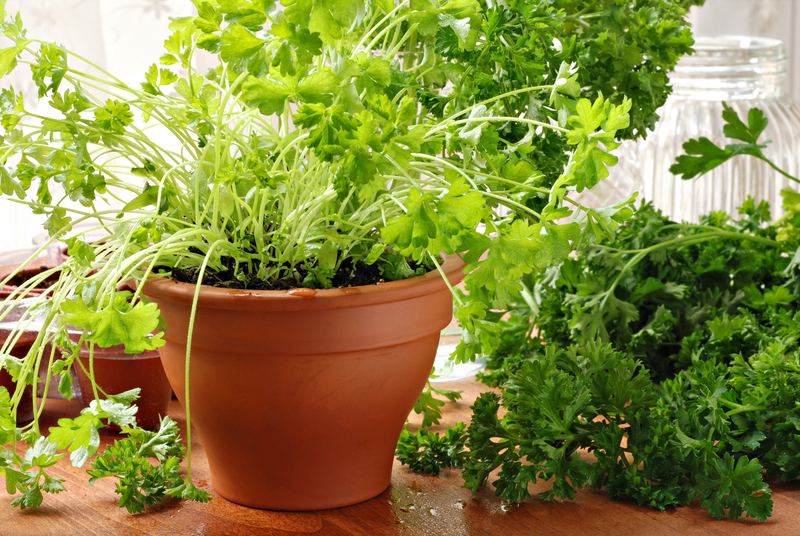Defend Your Garden Plants from Winter's Bite
Posted on 05/09/2025
Defend Your Garden Plants from Winter's Bite: Practical Tips for a Thriving Garden
As the days grow shorter and temperatures plummet, the threat of frost and cold weather can be daunting for any gardening enthusiast. Winter can be harsh and unforgiving, but with a strategic approach, you can defend your garden plants from winter's bite and ensure their survival until spring returns. In this comprehensive guide, we'll explore effective methods to shield your precious plants, providing practical tips and insights for both novice and experienced gardeners.

Understanding the Risks of Winter for Garden Plants
_Winter's chill doesn't just slow plant growth; it poses real dangers to roots, stems, and foliage._ Frost, snow, biting winds, and dramatic shifts in temperature can all compromise plant health. To effectively guard your garden, it's crucial to understand how winter weather impacts plant life.
- Frost Damage: Sudden frosts can rupture plant cells, turning leaves and stems to mush.
- Desiccation: Low humidity and chilly winds draw moisture from leaves faster than roots can supply it, leading to drying out.
- Heaving: Freeze-thaw cycles can force shallow-rooted plants out of the soil, exposing delicate roots to the elements.
- Root Rot: Water-saturated soils can freeze around roots, suffocating and rotting them.
Protecting your garden from these problems begins with choosing the right plants, but even the hardiest specimens need extra care in severe winters.
Key Strategies to Defend Your Garden from Winter's Bite
1. Choose and Position Plants Wisely
Start your defense against winter by selecting hardy plant varieties and situating them where they'll be least vulnerable to cold winds and frost pockets.
- Look up plant hardiness zones and select species suited for your region.
- Shelter delicate plants by planting near fences, walls, or hedges, which serve as natural windbreaks.
Pro tip: Slope south-facing beds can maximize sun exposure and heat retention, reducing frost risk.
2. Prepare the Soil
Healthy, well-prepared soil supports stronger roots and better plant resilience.
- Work in organic matter such as compost in the fall to boost soil structure and drainage.
- Avoid heavy fertilizing late in the season; this can encourage tender new growth vulnerable to frost.
3. Mulch for Warmth and Moisture Control
Mulching is one of the simplest yet most vital ways to protect your garden plants in winter.
- Apply a thick layer (2-4 inches) of organic mulch (straw, leaves, bark, or wood chips) around the base of plants after the ground cools.
- Mulch insulates roots, slows soil freezing, and stabilizes moisture.
- For extra protection, create mulch mounds over the crowns of perennials and tender plants.
Bonus tip: Using a living groundcover can also conserve soil warmth and shield plant roots.
4. Water Wisely Before the Freeze
Well-hydrated plants are better shielded from cold stress. Dry plants are more vulnerable to damage.
- Before heavy freezes, water the soil thoroughly to a depth of at least 6 inches. Wet soil retains heat better.
- Avoid watering during or just before freezing temperatures to prevent surface ice from damaging plant crowns.
5. Create Physical Barriers and Covers
Gardeners can deploy various physical methods to shield tender plants from winter's bite:
- Frost Cloths or Blankets: Lightweight, breathable covers protect from frost without suffocating the plant.
- Burlap Wraps: Wrap burlap around shrubs and evergreen trees to guard against drying winds and sunscald.
- Cloche or Cold Frame: Hard covers, such as glass or plastic domes, concentrate warmth for delicate specimens.
- Windbreaks: Temporary fences or stakes with hessian stop icy gusts from drying out plants.
Remember: Remove covers during the day if temperatures rise above freezing or if the plants need sunlight.
6. Prune with Caution
Don't prune heavily in late autumn: Pruning encourages new growth that may not harden off before winter and increases vulnerability to cold.
- Remove only dead, diseased, or damaged branches in fall.
- Wait until late winter or early spring for heavier pruning sessions.
7. Group Potted Plants
Container plants are especially susceptible to winter cold because their roots are more exposed.
- Gather pots in a sheltered corner or against a south or east-facing wall.
- Insulate containers with bubble wrap or hessian, and mulch the top of each pot for additional warmth.
- Raise containers off the ground with pot feet or bricks to prevent waterlogging and freezing of roots.
8. Rely on Row Covers for Vegetables
Defend your winter vegetable garden with low tunnels or floating row covers to create a warmer microclimate.
- Row covers trap some daytime heat, preventing frost from settling on tender greens and root crops.
- Remove or vent row covers during mild days to prevent overheating.
9. Care for Evergreens and Woody Plants
Evergreens can lose water faster than deciduous plants during winter.
- Water deeply in autumn; evergreens need moist soil to withstand winter winds.
- Wrap with burlap or use anti-desiccant sprays to seal in moisture if winters are especially dry and windy.
Common Plants That Need Extra Winter Protection
Some plants are more sensitive to winter's cold than others. Here's a quick list of garden favorites that benefit from extra vigilance:
- Roses: Protect graft unions with mulch mounds or rose collars filled with straw.
- Lavender: Provide excellent soil drainage and cover roots with gravel or mulch.
- Hydrangeas: Protect buds with burlap wraps or wire cages filled with leaves.
- Dahlias and Cannas: Dig up tubers and store indoors after the foliage dies back.
- Lettuces and Greens: Extend harvests under row covers or cold frames.
How to Revive Winter-Damaged Plants
Even the best preparations occasionally fall short. If you notice your garden showing signs of winter injury--blackened leaves, mushy stems, or stunted growth--don't lose hope. Here's how to nurse them back:
- Prune away obviously dead or damaged tissue in late winter to prevent rot and disease.
- Water sparingly until soil warms in spring to avoid waterlogged roots.
- Feed plants with a balanced, slow-release fertilizer after new growth appears.
- Be patient--many perennials emerge late or recover over multiple seasons after a rough winter.
Eco-Friendly Practices for Winterizing Your Garden
Sustainable gardening doesn't take a break for winter. Here are some environmentally sound ways to defend your plants from winter's harshness:
- Choose biodegradable, reusable row covers and mulches instead of plastics.
- Compost fall leaves in place as mulch rather than sending them to landfill.
- Leave some plant debris for overwintering beneficial insects and pollinators.
- Collect rainwater before freezes to use during winter dry spells.
When to Start Defending Your Garden from Winter's Chill
Timing is key to successful winter plant protection. Start your preparations in late autumn, adjusting your methods as temperatures fall:
- Late September-Early October: Clean up the garden, amend soil, and plan for protection strategies.
- Mid to Late October: Install windbreaks and row covers; begin to group and insulate containers.
- Before the First Heavy Freeze: Mulch and thoroughly water garden beds; set up physical shields as needed.
Don't wait for the first frost to act--a little planning ahead greatly increases your garden's odds of survival.

Frequently Asked Questions About Defending Your Garden in Winter
How can I tell if my plants need extra winter protection?
Young plants, tender perennials, or those grown outside their ideal hardiness zones are most at risk. If your area experiences frequent freeze-thaw cycles, strong winds, or unusual cold snaps, err on the side of caution and provide extra protection.
Is leaving snow on plants bad?
Actually, snow can act as an insulating blanket, protecting plants from extreme cold and wind. However, heavy, wet snow should be gently brushed off shrubs and branches to prevent breakage.
Can I use plastic tarps for covering plants?
_Plastic can trap moisture, leading to rot, and may overheat plants if left on during sunny days._ Use breathable materials like fabric sheets, burlap, or purpose-made frost cloths for the best results.
Do I need to fertilize garden plants before winter?
It's generally best to avoid fertilizing in late autumn, which may stimulate new growth susceptible to freeze damage. Instead, focus on adding compost or organic matter to improve soil health and plant vigor.
Conclusion: Enjoy a Vibrant, Resilient Garden--All Winter Long
With careful planning and a few key strategies, you can defend your garden plants from winter's bite and set the stage for a lush, thriving spring. Remember, no two gardens--or winters--are exactly alike. Observe your local conditions, adjust your methods, and enjoy the beauty of a garden that stands strong, whatever the season. By embracing these techniques, you'll not only protect your plants but also enrich your gardening experience from autumn's close to winter's end.
For the dedicated gardener, winter isn't the end--it's simply a new chapter. Protect, nurture, and prepare, and your garden will reward you with renewed life, come spring.



